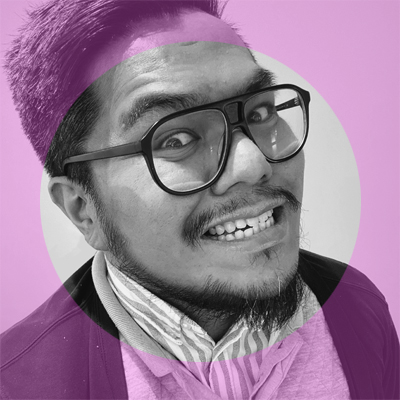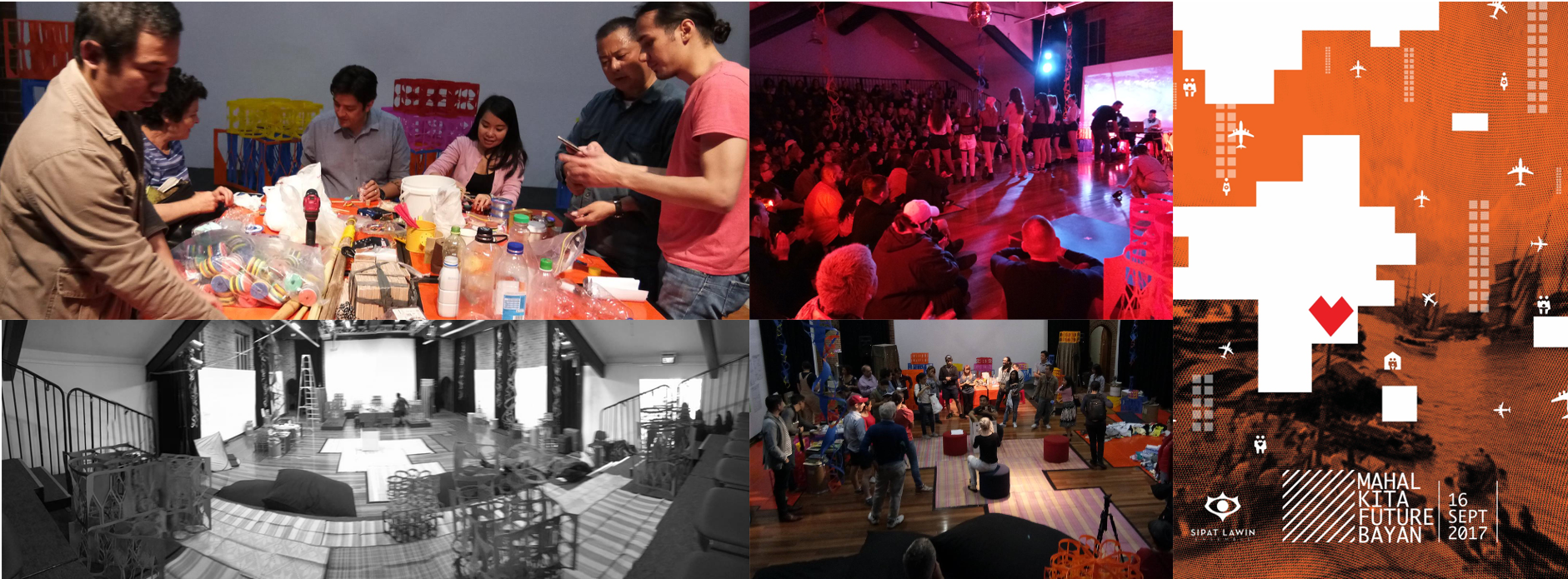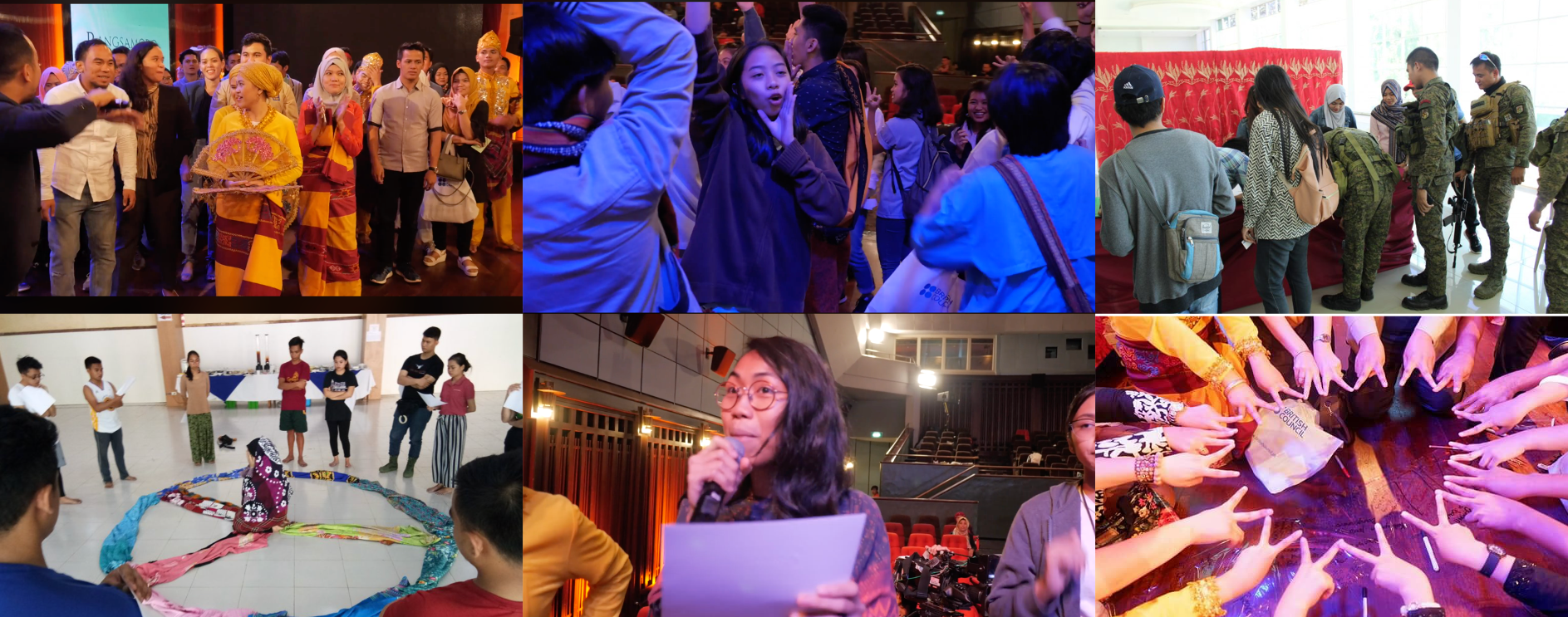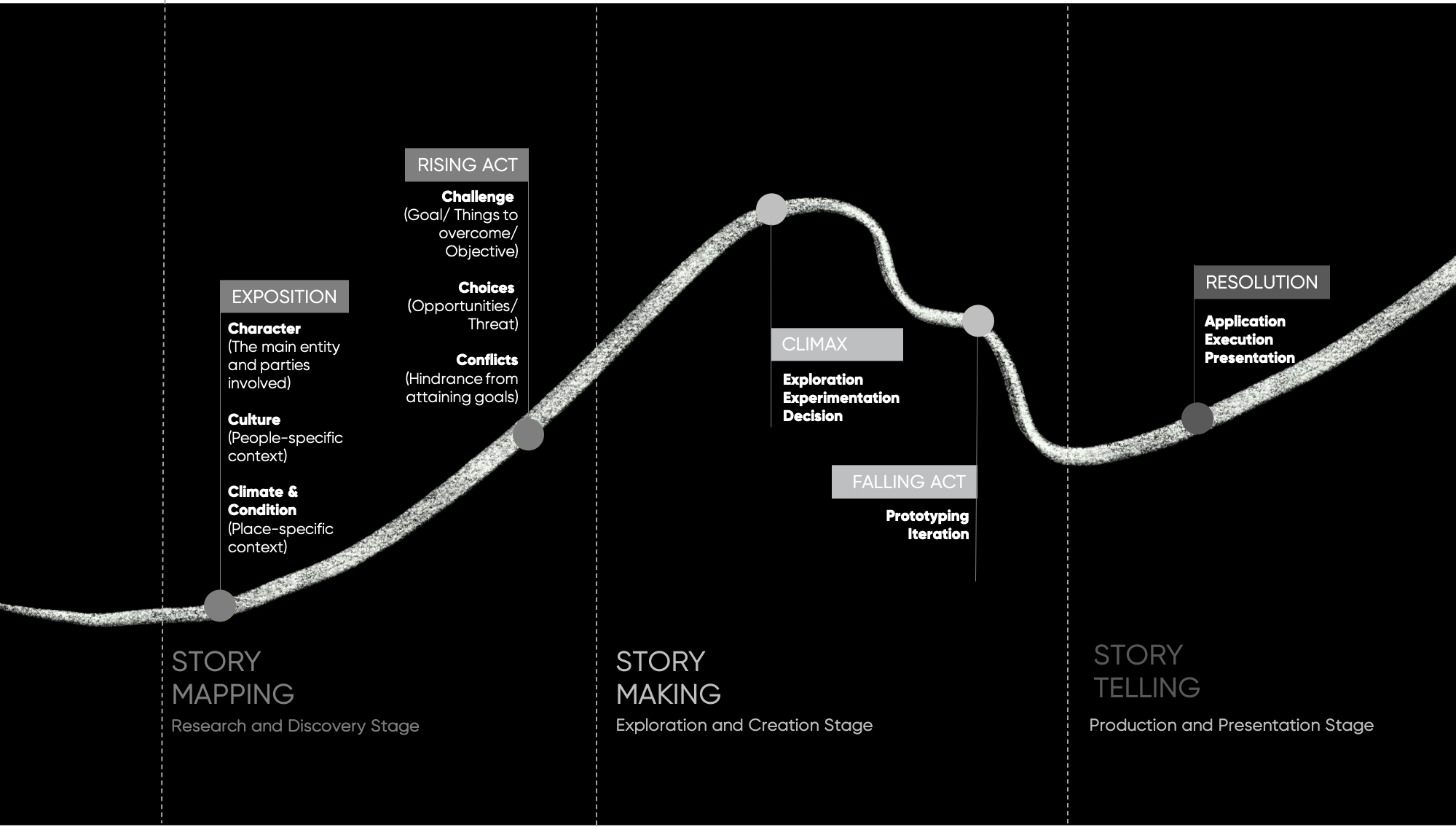
For this edition of our In Practice series, we are delighted to catch up with MA Narrative Environments graduate Kulay Labitigan, a Narrative Designer for an insight company.
What is your current role?
I currently work as a Narrative Designer for an insight company where I help bring company stories to life.
Tell us about a narrative environment you’ve worked on since graduating.
The MA Narrative Environments program taught me to have a critical lens towards storytelling and spaces.
One major takeaway which I live by today is the idea that “Everything social is spatial, and that everything spatial is social” and undeniably across the realms of spatial and social, stories are the invisible threads that bind them together. This idea is very familiar to me as my greatest motivation in pursuing this program is to share the narratives of the blurred social-and-spatial identities of my culture through creativity.
After graduating, I was lucky to have the chance to collaborate with Manila based performance-makers in devising a narrative festival about Filipino community in Blacktown, Australia. The project is called Mahal Kita Future Bayan where we tried to creatively interrogate how the experience of liminal shapes our concept of Filipino identity in the context of being uprooted and replanted in a foreign land, to inform a collective imagination of the future.

Another was a collaboration with British Council Philippines with the project called Komunidad:Bangsa Salam. I was part of the team who helped manifest an interactive and participatory performance project that aims to co-create and share peace-making modules in the southern part of the Philippines where a siege has happened, in addressing the need for spaces of social healing and solidarity.

True enough when you meet the right and like-minded people, these collaborations and synergies inspired the team to establish an anti-disciplinary collective committed to creating “life” performances for civic engagement and social development composed of social act-ors working at the intersection of art, culture, and development.
– What’s the most unexpected collaboration you have been involved in?
When COVID happened around the globe, we ran a community aid reaching the poorest in my hometown who were badly affected by the lockdown. But a couple of months in the community quarantine, resources and aids were depleting even from people who were initially donating and helping. However the heart and the spirit of the volunteers are still very much burning with generosity of time and dedication, so out of the blue our project called Tayabas-Seen Art Project was born.

It was a collaboration with local youth and creatives, where we produced a series of performance pieces about love and the current time, set in our hometown, and infused with the local language which are live streamed online. Several weeks in the process we realised that the act of creating is also a coping and a therapeutic process amongst ourselves during these uncertainty times. This only shows that site-specific and localised creative storytelling has the power to connect, bind, and to heal especially in time of crisis
– Is there a current narrative environment you would recommend people to visit?
Well we live in a very extraordinary time where we have to be physically distant but socially engaged. Thus it is very apparent that we need to create more sensitive storytelling of sensible stories. Which poses a question and challenges creatives like us today on how to bring narrative spaces and experiences that are relevant, socially conscious, memorable, and COVID-proof.
However, if I were to answer the question, (and this may sound very cheesy yet an unpopular choice) I would recommend to visit “The Making of Harry Potter in WB Studio” especially for people who might still be struggling to understand what narrative environment is, and what it could be in the first place.
Personally I am not a Harry Potter fan, but the way they merge the design of space to the curation of the experiences- from a movie theatre-like architecture upon arrival, to entering a massive screen, going through the movie sets, and capping the whole experience with a credits-like audiovisual delight is a great case-study to witness.
– What narrative environment method or approach have you found useful in your practice?
Narrative Arcs and Story shapes. When I was a student they seemed to be just structure, and a series of overly complicated and highly academical stipulations of events.
But as I went back to professionally do my work, it has proven itself to be a formidable and multidimensional tool that shaped my own practice. The thing is it’s like a religious script, you have to learn how to read between its lines, and crack and decode what it meant to you and what you do, then from there one will realise how productive a skeletal model it could be once applied empirically in real-life creative problems and solutions.

For me it’s like a map that guides my creative decisions and even philosophy towards life. It has helped me organise my thoughts and ideas with such clarity, breadth, and excitement. I even use the simplest version of this to solve everyday and trivial problems.
– What advice would you give a current student about to graduate?
Be the hero of your own journey a.k.a. NEVER SURRENDER!
I would not be able to find and do the work I love to do everyday today, had I not heeded the call, worn my cape, and raised my sword to defeat my dragon.
It was an impossible series of motes, walls, and bridges that I had to overcome to be able to even just set foot here in London back in 2015, how much more to survive a 2-year program. So embrace your character, dream deep, and ride with it. We all love to be spectators to a good conflict and intense side hustles. However very few of us are brave enough to actually do the uncertain jump. From meeting a lot of mentors, to crossing numerous thresholds and uncharted realms of refusal, return, and disappointments. Allow yourself to be carved by time and trust that everything will be alright as it has always been.
Know that it’s not gonna be easy but it is all gonna be worthwhile. As cliche as it may sound, the shortest cut to finding your post-graduate bliss is in never doubting yourself, taking the plunge, and flowing with it.